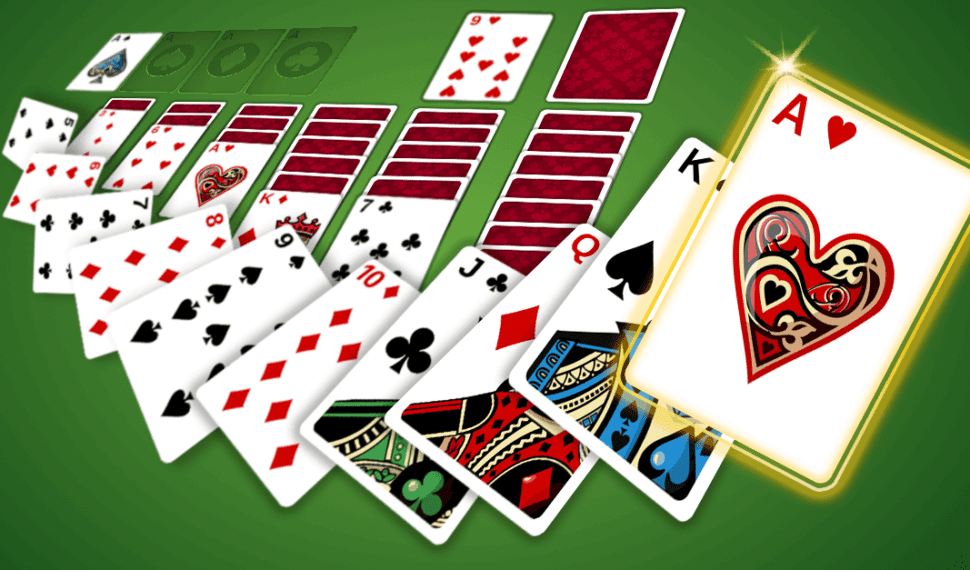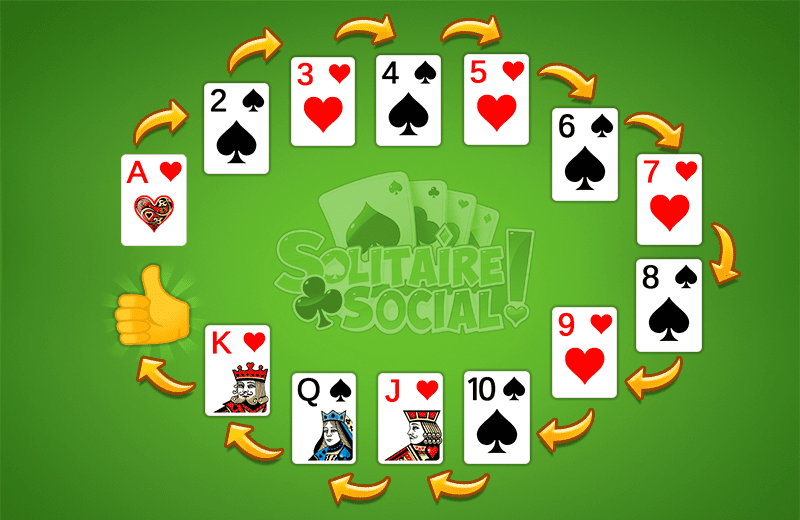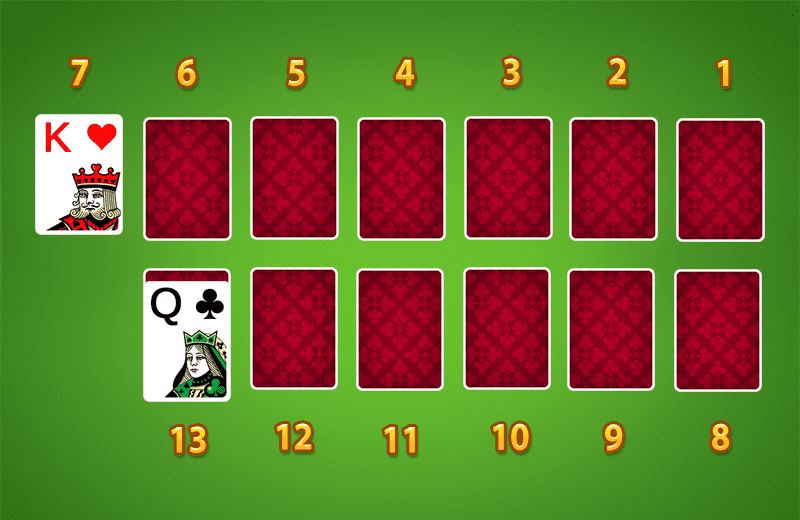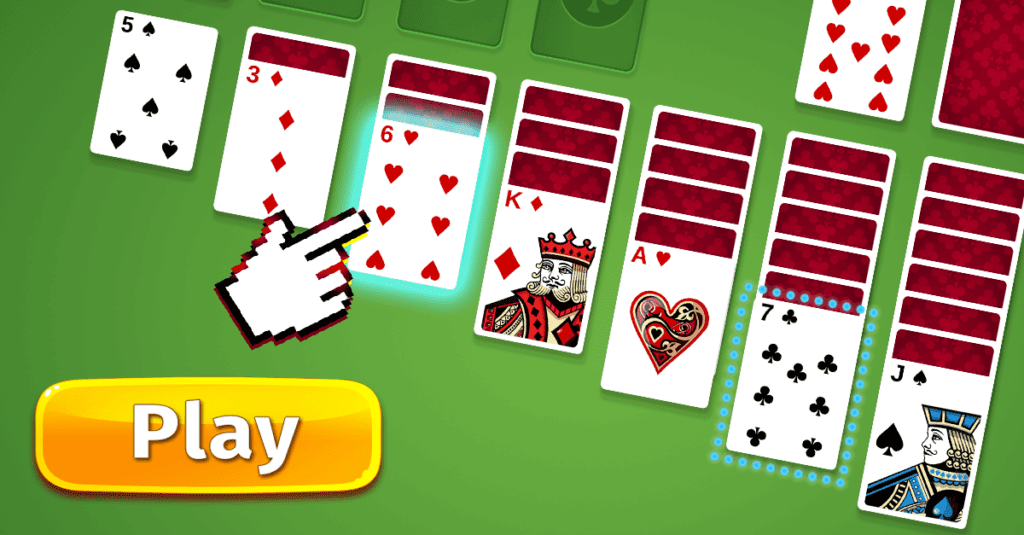
Comprehensive guide to Solitaire Set up
Solitaire Social is one of the most exciting and interactive card games where you can compete against other players from every part of the world. Regardless of whether you play it on a computer or a mobile device, the entertainment it provides is guaranteed.
But in order to play this card game with a pile of cards, you first have to learn how to set up Solitaire. The more details you know, the better you’ll understand it, and that means one thing – the better the gaming experience will be. In this article, we will reveal everything you need to know about how Solitaire is set up and how to enjoy this incredible card game.
Key Solitaire Terms
- Tableau: The main area where your cards are laid out. It’s the French word for “table.”
- Stockpile: The area where you place the remaining cards after arranging them on the tableau.
- Foundation piles: The space above the tableau where you move cards into. The aim of playing Solitaire is to move face-up cards from the tableau to these foundation piles.
- Talon: When you draw cards from the tableau or stockpile but can’t play them, you move them to the talon, also called a waste pile.
- Sequence: A sorted group of cards.
- Suits: The classes of cards. There are four suits: Clubs, Hearts, Diamonds, and Spades.
How Many Rows Are In Solitaire (Basics)?
To learn how to set up this game, you must first understand its basic features and terms. It uses a standard 52-card deck dealt in seven rows. You place the seven rows in ascending order; the first has one card, the second has two cards, the third has three cards, and so on until you reach the last row with seven cards. The top card of each row is placed face-up, while the ones below face down.
The area where you place your rows of cards is called the tableau. After setting it up, keep the remaining cards in a space below the tableau called the stockpile. Create four spaces above as the foundation piles. You aim to move cards from the tableau to the foundation piles in ascending order, starting with the Ace and ending with a King.

- This is the full ascending order; Ace, 2, 3, 4, 5, 6, 7, 8, 9, 10, Jack, Queen, King.
One person usually plays Solitaire as a puzzle game that keeps the mind busy. But Solitaire Social makes it more fun with its player vs. player mode. You can play with friends and families or get matched with random players worldwide. You can easily connect your Facebook account and invite friends to matches to see who has the better Solitaire skills.
This game incorporates magic spells to spice things up. For instance, you can cast a spell that freezes your opponent’s moves for a specific period or cast a spell to get a blocked card.
Solitaire Social isn’t just to play for fun. You can participate in tournaments and win real-world prizes. You can also tend to a virtual farm while playing; farming simulation can be a rewarding activity. This game is web-based, so you don’t need to download any app to play it.
An average Solitaire Social game lasts from 1 to 3 minutes. The exact timing depends on the players’ speed and abilities. You earn points as you arrange your cards in the desired order and overtake your opponent. Once a set timer runs out, the player with the highest score wins the game.
When playing a traditional game, you might get a difficult card setup and run out of moves. But in Solitaire Social, your magic spells can save you in such cases. Digital Solitaire games are also easier to win than the ones you play with physical cards. This means you’ll likely enjoy playing Solitaire Social more than the traditional version. Don’t hesitate to sign up and start playing this very exciting game!
Setting up a Game of Solitaire
If you were wondering what a solitaire setup should look like, then you are at the right place, as we will reveal how you can make a solitaire app without ads setup easy. To simplify the whole process of solitaire and how to set it up, we will explain it step by step.
Step 1: Preparing the Game
To set up a game of solitaire, you need two things, a small and stable table and a standard deck of 52 playing cards. There is no need for paper, pen, or any other player to play with. Regarding the space, a bigger playing area gives you a better overview of the solitaire card game layout. However, if you have a small table, you can carry out the card game without any issues.
Step 2: The Shuffling of the Cards
Once you’ve got everything you may need to play a game of solitaire, the next step is to take the deck of cards, take out the Jokers and shuffle the cards. This is a very important process as it ensures that the deck of playing cards is well mixed up.
Step 3: Dealing of the Cards
The solitaire set up one deck process is taking place in this step, where the seven cards are dealt face down. Only the first out of the seven cards that you will be dealt is face-up. The rest are dealt face-down.
For example, as you are dealing out the cards with a one-card-at-time method, make sure to give some space in between the pile of cards so that every piece gets its spot. It is important to note that the face-up cards and the remaining cards that are face down are referred to as Tableau.
These Tableaus are the ones you will be using to play the game. When the round is completed, Tableau will create an upside-down staircase of cards that are face-up.
The process of dealing continues as you deal only 6 cards and skip the first one. The first card that you will deal with in this process should be facing up, while the rest of the dealt cards should be facing down. Now, on the third pile of cards from the left, deal a card that is facing up and on the other four foundation piles to the right, deal one card each facing down.
On the fourth card from your left, you will deal a card that is facing up and deal three cards to the rest of the piles on the right-facing down. During this time of the dealing process, you should be aware of the pattern of how the solitaire cards are being dealt.
You will have to repeat the same procedure for the fifth and sixth cards. When you reach the last card of the 52 card deck, deal it facing up. After dealing all the cards, you should be left with one pile of cards that don’t have a card facing up.
This stack of cards should be located on the far right of the stack. On that particular stack of cards, you should deal with the final card, and it should be facing up. After that, your Tableau will be complete, and the whole solitaire card layout will be ready to play.
The dealing of the cards in solitaire is usually the trickiest part of setting up a game of solitaire. After going through this big step, the next part of the game should be very easy for you.
Step 4: Setting Aside the Remaining Deck of Cards
Once you finish dealing the cards to Tableau, you will end up with a set of cards on your hands. These are the cards that you will use as your stock and should be placed on the left side of the Tableau that you’ve dealt with in the previous step.
When you’re playing a game of solitaire, you will be drawing cards from that stack of cards. Some players shuffle their stock of cards before beginning the game of solitaire, but this isn’t compulsory.
Step 5: Make Room for the Discard Pile
During a game of solitaire, there will be some cards that you will draw but won’t need to use. These cards are placed on the so-called waste pile. When a game of solitaire starts, the discard pile will always be empty.
So it is advisable to leave some space for your waste pile while setting up the game. This waste pile can be flipped over during the gameplay after you’ve exhausted all of your cards.
Step 6: Make Room for the Foundation Piles
In solitaire, the foundation piles are located to the right of your discard pile. These are the piles where you should place the cards that have cleared from the Tableau table at the time of the Solitaire game. As well as the discard pile, this foundation pile is also empty at the start of the game. Foundation piles are meant to accommodate 4 stacks of cards.
How to Play Solitaire?
Now that you know the basics and how to set up a game of solitaire, you are ready to learn how to play solitaire with cards. As we mentioned before, the main objective of this card game is to build up each of the 4 foundations in a proper suit and sequence (from Aces as a top card to Kind as the last card).
To begin a game of solitaire, you will deal the cards out as described above. You will then look at the face-up cards and see if you can make any moves. Each of the four foundations must begin with an Ace and only an Ace, so make sure you move the Aces up to the foundations’ spots.
You can also make other card moves. It is possible to move cards from one Tableau column onto the next tableau, as long as you have passed all of the requirements:
- The card in a column must be placed in descending order (K, Q, J, 10, 9, 8, 7, 6, 5, 4, 3, 2, A).
- A card should be red and black, the cards must alternate in colour with red and black.
- Only The King card is able to be moved to an empty Tableau column.
If you wish to move a card from one column to a different one, the consecutive cards need to be in opposite colours. For example, if you have a red 2 and you want to move it to a 3, the 3 needs to be black. Same-coloured numbers cannot be stacked.
Additionally, the row needs to be set from the lowest to the highest card value. That means that you cannot move a black 8 to a red 7. There’s also a stockpile at the top-left corner, and each time you click on it, a random card will appear and you will be able to decide whether it is possible to stack it or not.
In Solitaire Social, you can go through the stockpile an infinite number of times. The ultimate goal is to complete the four foundations and collect all cards from A-K. The four foundations are:
- Spades
- Hearts
- Diamond
- Clover
This may seem like an easy and simple strategy, but there’s a lot of thinking involved in the game, and the gameplay can get complicated really fast. That is exactly what makes it fun and exciting, and that is exactly why it is worth a try.
Considering the fact that all card games are based more on skill than luck, Solitaire Social included, you must be wondering whether you can use any types of strategies to increase your chances of winning the tournaments against other players. That is exactly the next topic of this guide, so let’s dive into the details.
How To Set Up Solitaire: Variations
There are different versions of Solitaire. They all use a tableau, foundation pile, stockpile, etc., but the difference lies in how these instruments are arranged. For instance, some versions have all cards placed face-up on the tableau instead of only the top one like in the typical Solitaire. Let’s examine how to set up different versions of this game below:
How To Set Up Spider Solitaire
This version requires two decks of 52 cards each. This means there are now eight foundations to complete instead of four like in the typical one.
In this version, you deal ten columns of cards. The first four columns will have six cards each, and the remaining six will have five cards each, totaling 54. The top card of each column is placed face-up, while the rest are placed face-down.
Afterward, keep the remaining 54 cards in the stockpile, which you can draw from if you run out of moves during gameplay. The game has been set up, and Spider solitaire gameplay begins with the traditional Solitaire rules.
How To Set Up Free Cell
Free Cell users one 52-card. Your tableau has eight columns of six cards, each placed face-up. You then place an additional card on the first four columns. Leave four spaces as the foundation piles and four extra spaces as the “free cells.”
The specialty of this version is that you can freely move any top card to one of the four free cells; this feature ensures easier card movement and makes Free Cell one of the easiest types of Solitaire you can play.
How To Set Up Mahjong Solitaire
Mahjong is quite a different type of Solitaire. Here, you arrange the cards randomly on the tableau. There’s no foundation pile or stockpile to draw from during gameplay. Instead, the aim is to match cards of the same format and eliminate them from the board. You win once you successfully eliminate all cards from the board.
There’s no specific shape to arrange your cards in. The most common are a pyramid shape, a square shape, or a randomized shape. This version uses two card decks.
How To Set Up Solitaire For 2 Players
A game for two players is called Double Solitaire. Hence, you need two 52-card decks. Each player’s deck will be arranged in the same format.
Start by shuffling the cards thoroughly. Deal seven columns of cards in ascending order; the first column with one card, the second with two cards, and so on until you get to the seventh column with seven cards. This is the basic solitaire arrangement, but you can also play other versions with another person.
The two players still adhere to the same rules as the traditional Solitaire.
How To Set Up Yukon
Yukon uses a standard 52-card deck dealt in seven columns. Your first column has just one card. The second has six cards, the third has seven cards, the fourth has eight cards, the fifth has nine cards, the sixth has 10, and the seventh has 11, totaling 52 on the table. Each column after the second has five cards placed face-up and the rest placed face-down. The aim of Yukon remains to move cards from the tableau to the foundation piles in ascending order.
Frequently Asked Questions
How many columns do you start with in Solitaire?
There are seven columns for a standard Klondike Solitaire layout, which is the same number of columns for Solitaire Social.
How many cards are in each pile for Solitaire?
From left to right: 1, 2, 3, 4, 5, 6, 7 cards
How many rows do you lay out for solitaire?
There are seven rows and seven columns in the classic online solitaire. But the number of cards in each row decreases by one from right to left. How many rows are in solitaire also depends on the type of the game. Most Solitaire games have 7 rows
How many cards do you set up for solitaire?
There are 52 cards set up.
How do you layout a deck of Solitaire?
First, shuffle the deck, then deal seven cards in a row. Make sure you follow these instructions
How do you set up a card game of solitaire?
To set up a Solitaire card game, you may use our guide
Here are some useful videos explaining how to play and set up Solitaire
- Solitaire for newbies
- April 21, 2022



